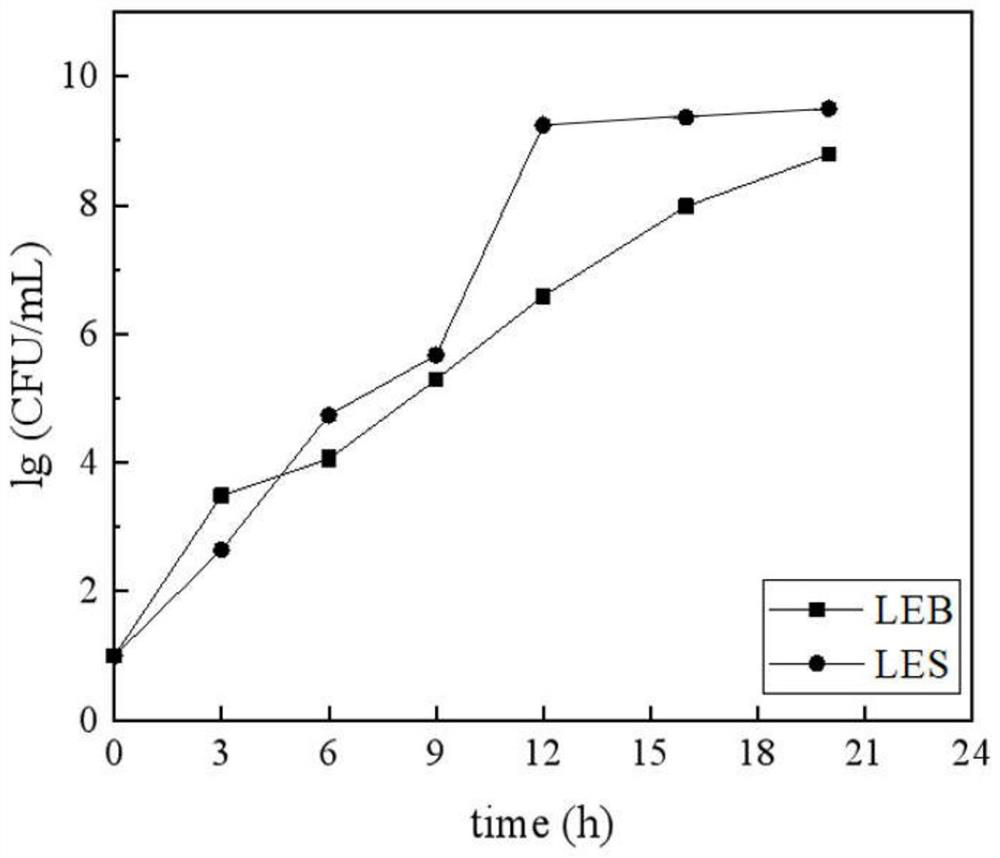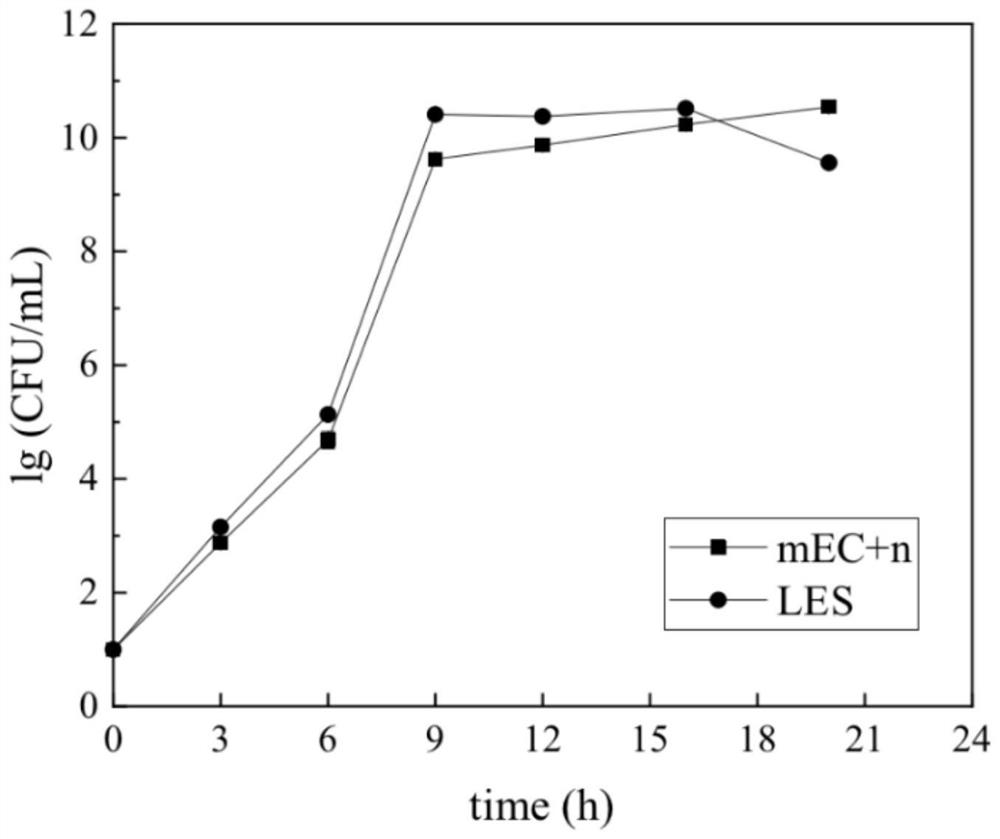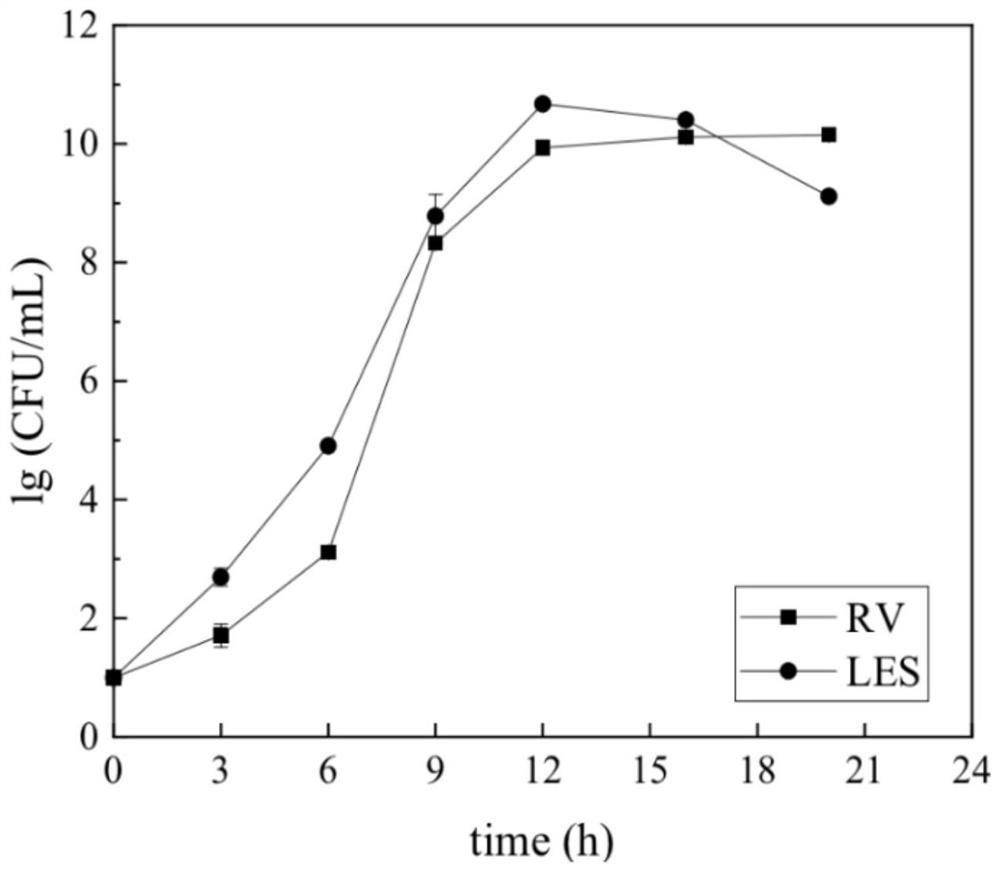Composite culture medium capable of simultaneously enriching three food-borne pathogenic bacteria and preparation method
A technology for food-borne pathogenic bacteria and culture medium, which is applied in microorganism-based methods, biochemical equipment and methods, bacteria, etc., can solve problems such as increasing the workload of detection, and achieve rapid proliferation and good co-enrichment effect. Effect
- Summary
- Abstract
- Description
- Claims
- Application Information
AI Technical Summary
Problems solved by technology
Method used
Image
Examples
Embodiment 1
[0031] Embodiment 1: LES culture medium monoenrichment effect identification
[0032] Weigh 17.0 parts of tryptone, 3.0 parts of peptone, 6.0 parts of yeast extract, 5.0 parts of sodium chloride, 2.5 parts of dipotassium hydrogen phosphate, 9.6 parts of disodium hydrogen phosphate, 1.35 parts of potassium dihydrogen phosphate, 25.0 parts of peptone, 15.0 parts of beef powder, 14.0 parts of soybean peptone, 3.0 parts of glucose, 0.3 parts of cycloheximide, 3.0 parts of mannitol, 6.0 parts of sodium pyruvate, 0.003 parts of acridine yellow, 0.003125 parts of fosfomycin sodium, distilled water Set the volume to 1000 parts, stir and heat, boil until completely dissolved, after cooling to room temperature, adjust the pH to 7.2, autoclave at 121°C for 20min, and store at 4°C.
[0033] Take a certain amount of overnight cultured fresh bacteria liquids of Listeria monocytogenes (LM), Escherichia coli O157:H7 (O157:H7), and Salmonella (SE) and inoculate them into LES medium and their ...
Embodiment 2
[0035] Embodiment 2: LES culture medium co-enrichment bacterial effect identification
[0036]Add a certain amount of Listeria monocytogenes, Escherichia coli O157:H7, and Salmonella bacterial liquid into the LES medium, so that the initial concentration of the three target bacteria is 10 CFU / mL. After inoculation, shake culture at 37°C and 200rpm, take 3h, 6h, 9h, 12h, 16h, and 20h cultures for plate counting, and count the culture medium for Listeria monocytogenes, Escherichia coli O157:H7, and Salmonella They are PALCAM agar medium, Escherichia coli O157 chromogenic medium and bismuth sulfite agar medium respectively.
[0037] According to the colony counting results at each time point, the figure 2 In the growth curve shown, on the whole, 0-12h is the stage of rapid bacterial growth. After 12 hours of cultivation, the concentrations of the three bacteria basically reached or exceeded 10 7 CFU / mL (Listeria monocytogenes 0.87×10 7 CFU / mL, Escherichia coli O157:H7 7.5×10...
Embodiment 3
[0038] Embodiment 3: the inhibitory effect of LES medium to non-target bacteria
[0039] A certain amount of target bacteria and non-target bacteria were added to the LES medium, so that the initial concentration of non-target bacteria was 100 CFU / mL, and the initial concentration of target bacteria was 10 CFU / mL, and then cultured with shaking at 37 °C and 200 rpm. Take the cultures of 3h, 6h, 9h, 12h, 16h, and 20h to measure the McFarland turbidity value, and the results are shown in Table 4. By comparing the McFarland turbidity values of target bacteria and non-target bacteria, it can be seen that the growth of non-target bacteria Bacillus subtilis, Yersinia enterocolitica, and Pseudomonas aeruginosa in LES medium was significantly inhibited.
[0040] Table 4 McFarland turbidity values at different time points when target bacteria and non-target bacteria were cultured in LES medium
[0041]
PUM
 Login to View More
Login to View More Abstract
Description
Claims
Application Information
 Login to View More
Login to View More - R&D
- Intellectual Property
- Life Sciences
- Materials
- Tech Scout
- Unparalleled Data Quality
- Higher Quality Content
- 60% Fewer Hallucinations
Browse by: Latest US Patents, China's latest patents, Technical Efficacy Thesaurus, Application Domain, Technology Topic, Popular Technical Reports.
© 2025 PatSnap. All rights reserved.Legal|Privacy policy|Modern Slavery Act Transparency Statement|Sitemap|About US| Contact US: help@patsnap.com



